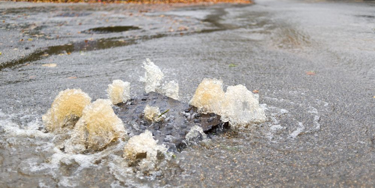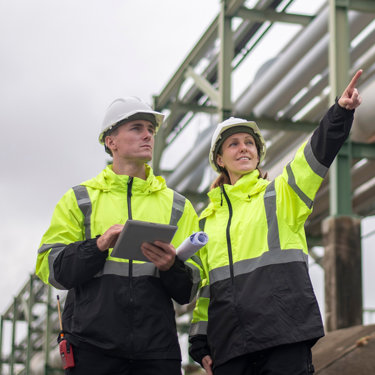Mitigating the impact of the 4 ‘I’s to reduce pollution in water networks
Published: 12 June 2025
One of the most significant issues in managing water quality and reducing pollution is the volume of water entering the network. This can be influenced by four key factors:
- Inflow
- Infiltration
- Ingress
- Inundation
These elements – collectively known as the four 'I's – have a profound impact on pollution levels and the overall efficiency of our water systems.
Understanding the four 'I's
Inflow refers to the water that enters the sewer system from sources such as stormwater drains and surface runoff. This can occur during heavy rainfall when water flows directly into the sewer network.
Infiltration is the process by which groundwater seeps into the sewer system through cracks and leaks in pipes.
Ingress involves the entry of water from external sources such as rivers or lakes into the sewer system.
Inundation is the flooding of the sewer system due to extreme weather events or high tides.
Each of these factors contributes to the overall volume of water in the network, which can lead to significant pollution challenges.
Impact on pollution
The presence of excess water in the sewer system can dilute wastewater, making it more difficult to treat effectively. This can result in untreated or partially treated sewage being discharged into the environment, leading to pollution of rivers, lakes, and coastal areas. The increased volume of water can also overwhelm treatment plants, causing them to operate less efficiently and increasing the risk of system failures.

Inflow can introduce pollutants from urban run-off such as oils, heavy metals, and chemicals into the sewer system. Infiltration can bring contaminants from groundwater, including nitrates and pesticides, into the network. Ingress can introduce pollutants from external water bodies, such as sediments and organic matter. Inundation can cause sewer overflows, leading to the release of untreated sewage into the environment.
Each of these scenarios poses a significant risk to water quality and public health.
Strategies for reducing water entry
To mitigate the impact of the four 'I's on pollution, a multifaceted approach is required to improve the overall effectiveness of the wastewater network. This incorporates infrastructure improvements, enhanced monitoring and detection systems, and preventive measures.
Infrastructure improvements
Upgrading and maintaining sewer systems to prevent leaks and cracks can significantly reduce infiltration.
There are a variety of techniques available depending on the ground and environment, and technological innovation means large gains will continue to be made in this area.
Installing backflow prevention devices can help manage inflow and ingress, while better flood defences can mitigate the risk of inundation.
Enhanced monitoring and detection systems
Advanced monitoring systems to detect and quantify inflow, infiltration, ingress and inundation can provide valuable data for managing water entry. Sensors and remote monitoring technologies can identify problem areas and enable a quick response to any issues.
Preventive measures
Developing green infrastructure solutions such as permeable pavements and rain gardens can reduce surface run-off and inflow. Land use planning and zoning regulations to protect vulnerable areas from inundation can also be effective. Encouraging the use of sustainable drainage systems (SuDS) can help manage water entry and reduce pollution.
Misconnections need to be addressed too. This must be done at scale through survey and rectification, which should be conducted by trained wastewater specialists who appreciate and understand the need to improve the overall effectiveness of the network.
Innovative solutions and a collaborative approach to mitigate the impact of the four 'I's on water quality and public health
Reducing the volume of water entering the sewer network is crucial for managing pollution and ensuring the efficiency of our water systems.
By addressing the four 'I's with innovative solutions and a collaborative approach, we can mitigate their impact on water quality and public health.
The challenge of managing water entry into the sewer network requires a comprehensive strategy that includes infrastructure improvements, enhanced monitoring and detection systems, and preventive measures.
By tackling the four 'I's head-on, we can reduce pollution, enhance the resilience of our water systems, and protect the environment for future generations.
More from our Knowledge Hub
 White paper
White paperDelivering Section 82: A whole-sector response to continuous water quality monitoring
 News
NewsCelebrating our Rising Star: Jack Anderson
 News
NewsSetting the standard: Adler & Allan celebrates triple success at UK & Ireland Spill Association Annual Awards 2025
 Webinar
WebinarClimate Resilience: Protecting Your Assets and Operations
Environmental compliance today, creating a sustainable tomorrow
Helping you reduce risk to the environment and your operation by managing assets compliantly while achieving commercial, ESG, and net-zero goals.
Contact our experts
